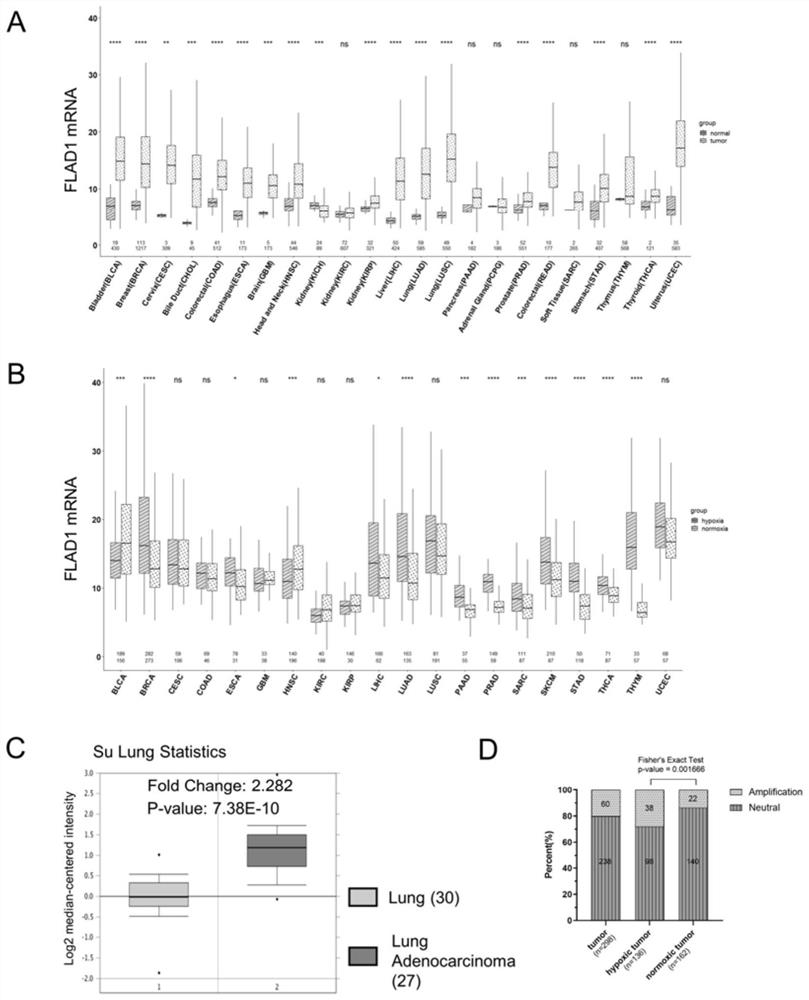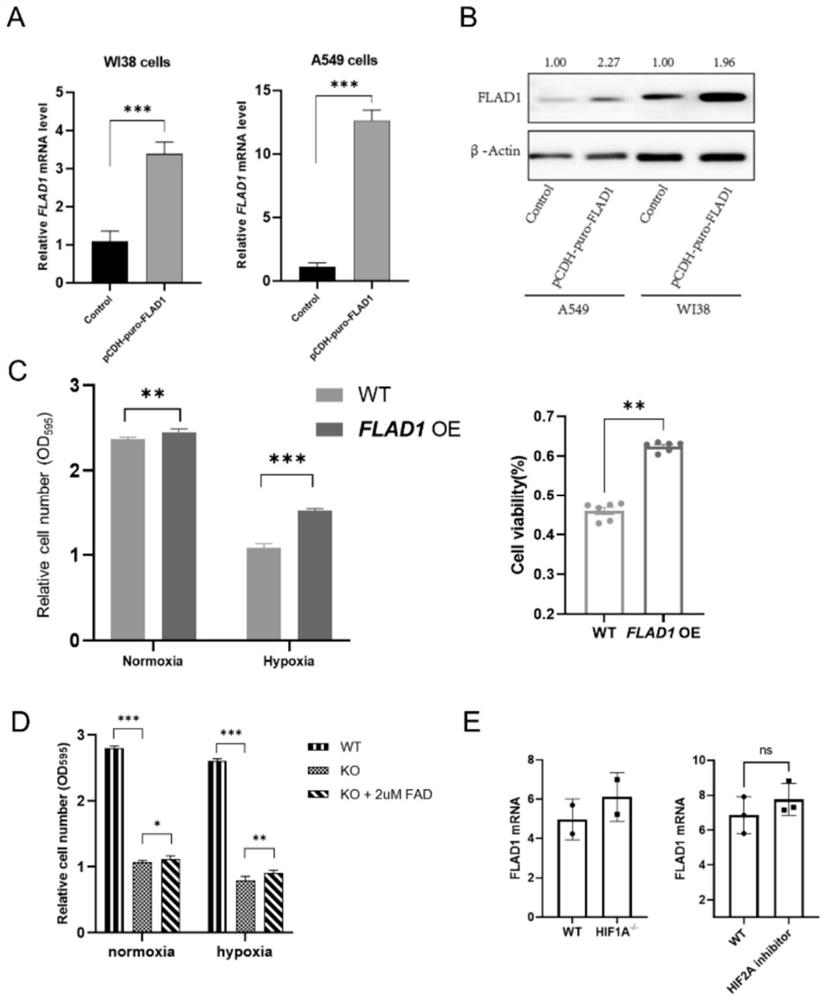Tumor treatment target adaptive to hypoxia or hypoxia microenvironment and application thereof
A micro-environment and tumor technology, applied in anti-tumor drugs, medical preparations containing active ingredients, organic active ingredients, etc., to achieve the effect of solving poor therapeutic effects and good application prospects
- Summary
- Abstract
- Description
- Claims
- Application Information
AI Technical Summary
Problems solved by technology
Method used
Image
Examples
Embodiment 1
[0034] This example provides the application of FLAD1 in the targeted therapy of hypoxic or hypoxic tumors:
[0035] (1) Analysis of FLAD1 gene expression and copy number characteristics
[0036] Based on The Cancer Genome Atlas (TCGA) and Oncomine databases, the gene copy number and mRNA expression of FLAD1 were analyzed in hypoxic tumors (including lung cancer, breast cancer, prostate cancer, liver cancer, pancreatic cancer, melanoma, esophageal cancer, gastric cancer, thyroid cancer) expression in cancer, etc.), the results are as follows figure 1 As shown in A-D, the gene copy number and mRNA expression of FLAD1 were significantly upregulated in hypoxic tumors compared with non-hypoxic tumors.
[0037] (2) Knocking out FLAD1 can inhibit the proliferation of hypoxic tumor cells and reduce their tumorigenic ability in vivo
[0038] Construct sgRNA plasmid, use Benchling website to design sgRNA targeting FLAD1, such as figure 2 Shown in A, the sequence of gRNA of the pres...
Embodiment 2
[0060] This example provides the application of the FAD anabolic pathway in the targeted therapy of hypoxic or hypoxic tumors:
[0061] (1) The gene expression numbers of lung cancer samples in the TCGA database were analyzed by bioinformatics technology:
[0062] Based on the KEGG database to extract FAD metabolic pathways, such as Figure 4 As shown in A, by Figure 4 A shows that the main product of riboflavin metabolism is FAD, and the whole metabolism can be divided into two parts, one is the anabolism of FAD, and the other is the catabolism of FAD. Among them, the genes SLC52A1, SLC52A2, SLC52A3, RFK, and FLAD1 are involved in the anabolism of FAD , the genes ENPP1, ENPP3 and ACP5 are involved in the catabolism of FAD. By analyzing the gene expression data of lung adenocarcinoma patients on TCGA, comparing tumors with normal tissues, hypoxic tumors and non-hypoxic tumors, it was found that the FAD anabolic genes SLC52A1, SLC52A2, SLC52A3, RFK, and FLAD1 were in The ex...
PUM
 Login to View More
Login to View More Abstract
Description
Claims
Application Information
 Login to View More
Login to View More - R&D
- Intellectual Property
- Life Sciences
- Materials
- Tech Scout
- Unparalleled Data Quality
- Higher Quality Content
- 60% Fewer Hallucinations
Browse by: Latest US Patents, China's latest patents, Technical Efficacy Thesaurus, Application Domain, Technology Topic, Popular Technical Reports.
© 2025 PatSnap. All rights reserved.Legal|Privacy policy|Modern Slavery Act Transparency Statement|Sitemap|About US| Contact US: help@patsnap.com



